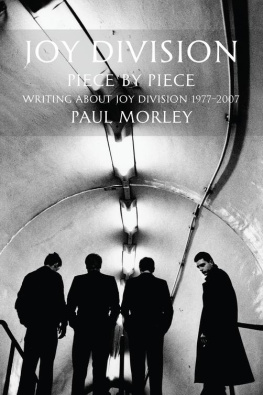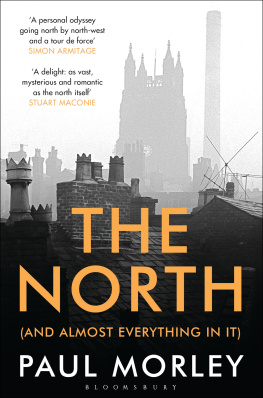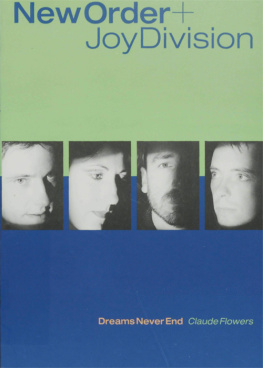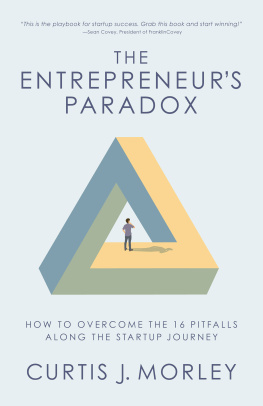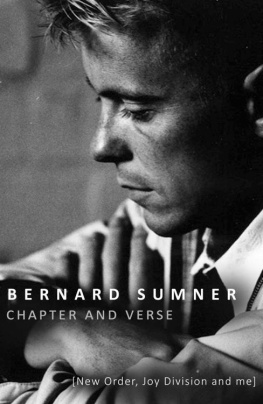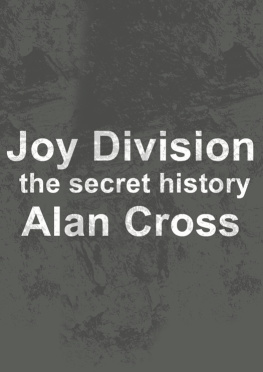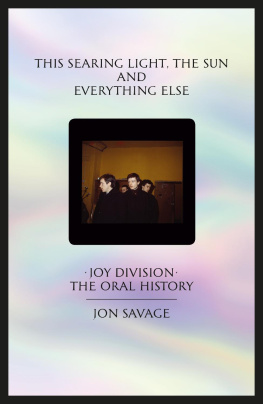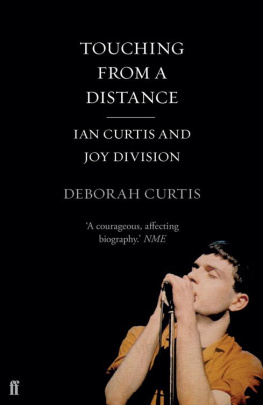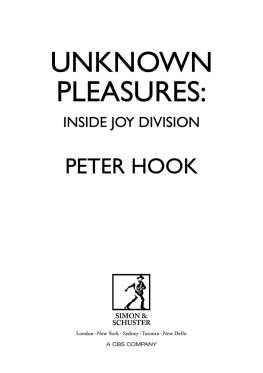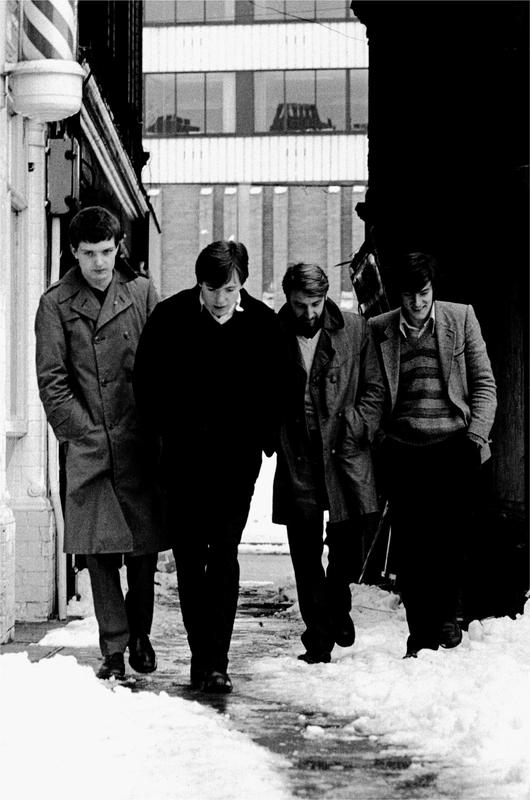Once or twice in the pages that follow I step back for a moment and think about the implications of what I am doing.
Notes for a narration by the author/for a BBC 6Music radio retrospective of Joy Division broadcast in May 2005 the 25th anniversary of Ian Curtis death.
It has taken 25 years for the story of Joy Division to travel from the dark underground into the commercial light. 25 years for Joy Division to go from rumour, from obscurity, from the ordinary streets where they lived, to being officially named as one of the greatest rock groups of all time they were influenced by the very best things to be influenced by the Stooges, the Velvets, Roxy and they have influenced all the very best things since Depeche, U2, Nirvana, Radiohead and no serious modern group can escape their shadow.
No group that wants to do something original and special using guitars, bass, drums, voice and studio can avoid the sound and vision, the sound and fury, the sound and beauty, the sound and space, the sound and time, the sound and delay, the sound and Manchester of Joy Division.
It was 25 years ago that the frantic story of Joy Division came crashing to a shocking stop, and 25 years since the story slowly began. A group, two years old, that was on the go, full of go, forward, always moving into the future, broke up into pieces. Going, going, gone. Eventually, compilations and repackagings and anniversaries and films and memories and books and the enduring strength of their songs would put these pieces back together again. Joy Division have been put back together by time, and something that at the time seemed wasted and wrecked is now remembered with words like these
25 years ago the Joy Division singer Ian Curtis committed suicide two months shy of his 24th birthday.
29 years ago he had four years to live.
Around the time of Ians twentieth birthday, in July 1976, Curtis saw the Sex Pistols play the Lesser Free Trade Hall in Manchester, not then aware of the presence of his future colleagues Bernard Sumner and Peter Hook. The two shows the Pistols played in Manchester that summer are the beginning of the Manchester music life that includes the Fall, Buzzcocks, Magazine, A Certain Ratio, the Smiths, Stone Roses, Oasis, Doves, and the Pistols shows were the beginning of Joy Division. The Pistols inspired Manchester music fans to realise that they could make music as well as listen to it. They could be musicians.
In a broken down, bleak and spacious Manchester taunted by the ghosts of the Industrial Revolution and hemmed in by hills, moors and dull grey clouds, Sumner and Hook formed a group with Curtis and drummer Steve Brotherdale that for a brief moment were the Stiff Kittens, and were then Warsaw, named after a Bowie track from Low, Warszawa. Their first gig was in May 1977, supporting the Manchester Buzzcocks and the Newcastle Penetration. They sounded more like a slow northern Damned than cosmic rearrangers of rock dynamics, more like a group that couldnt really play than a group who might one day match or even reach further than Bowies Low.
Brotherdale left in August, to be replaced by Stephen Morris, who, like Curtis, was from Macclesfield. Warsaw produced an undernourished homemade EP, An Ideal for Living, less the Damned than before but not yet in any way damned. They changed their name because of a London punk group called Warsaw Pakt. They became Joy Division, a name they found in an obscure book about the German concentration camps, The House of Dolls, written by an inmate, Ka-Tzetnik, prisoner number 135633. The joy division was a term used to describe units where female inmates were forced to prostitute themselves for Nazi guards.
A group with a name like that had to make music of sensitive, complex power and rare insight to avoid being condemned for indulgent frivolity, for messing around with things beyond their understanding.
By the time they first appeared as Joy Division, at the Pips club on January 25th 1978, around the time Rotten left the Sex Pistols, strangely, they were becoming stranger, and darker, and wilder, and beginning to sound like a group called Joy Division. Space and doubt were creeping into their music blocky riff music was transforming into something sly, nebulous and alien.
They were ambitious. They took part in a Battle of the Bands record company competition in April at the Rafters club a sort of Punk Idol display by fifteen local bands desperate to get the attention of the London label Stiff. It was their third show with their new name. Joy Division went on last, way after midnight, worked up into a frenzy by the possibility that they might not get a slot, and a fierce desire to impress that shot straight into the heart of their music. Local television celebrity Tony Wilson instantly saw something in their eyes, limbs and rhythms and was further intrigued, even delighted, when Curtis insulted him for not putting Joy Division on his Granada TV show. Also around at the time local promoter turned record producer Martin Hannett and the Rafters resident disc jockey Rob Gretton, who had managed crude Wythenshawe punk popsters Slaughter and the Dogs.
Their anger was not that of banal punks lobbing scowls at the everyday targets of frustration, but more mysterious, less domestic rage aimed at time, history and the gods, aimed at the self, and fate. Hook, Morris and Sumner all played as if they were the lead instrument, and Curtis voice sometimes drifted behind the sound. But he was discreetly dominant, truly the voice, the mind, the body of the band. Slowly, he started to move onstage, slowly, he started to move faster, slowly, he turned into a performer possessed, flailing across the turbulent rhythms as if he was physically representing the wired state of his imagination.
They worked with self-sustaining determination during 1978, and gained strength and self-belief. With anti-South philanthropic purpose, Tony Wilson and friend actor Alan Erasmus had launched a local club dedicated to supporting and promoting local talent, and the first night of their Factory Club on June 9th 1978 featured Joy Division, beginning to sound like theyd slipped through the doors of perception, into a wonderland where Manchester could be the charged centre of the universe, yet completely adrift from it.
Local design student Peter Saville produced an eye-catching poster for the show even though he delivered it after the concert was over. The poster for the Factory show was FAC 1 the very start of Factory Records, the first thought, which would lead to another thought, and so on, until there were so many thoughts they needed to be numbered.
Mr Television Tony Wilson issued his invitation, and Joy Division appeared on Granada Reports, the Northwest six oclock news show, performing Shadowplay a bare set, the intense group paraded on podiums like a downbeat sixties pop group, moody shots of the city centre as a backdrop, as if Manchester was located on the dark side of the moon.
Wilson and Erasmus turned the Factory club into the Factory record label. They would be joined by Gretton, who backed into managing the group, and who then protected them with his life, Hannett, who as Martin Zero had produced Buzzcocks punk ground zero single Spiral Scratch, and enigmatic imagineer Saville. The name Factory was as much out of the Lancashire mills, the local industrial past, as it was a knowing nod to Warhols Manhattan community of freaks and dreamers. Also, when most factories in the area had closed down, here was one that was opening. Eventually, as the result of various fun and games, and associated heartache and decision making, the label would have a catalogue of over 400 items, some of which were musical, some of which were ideas, some of which were mere fancies and failed experiments, and some of which were to do with the teeth, hair and travel arrangements of the directors. There was also a nightclub, because Factory understood that the quality of a citys nightlife can have a strange effect on mundane daily existence. Eventually, largely because of this nightclub, which began a little sadly and then ended up a little madly, the stylings, humour and pretensions of the label would influence the city itself, somehow infecting its very atmosphere and appearance.

